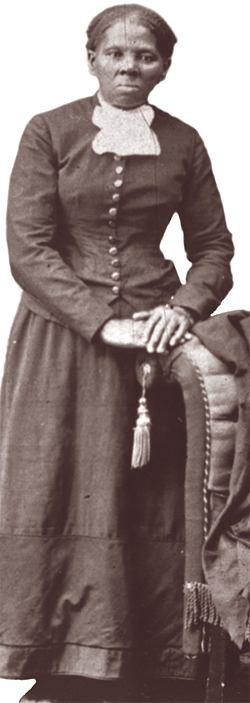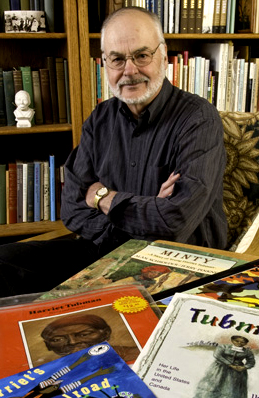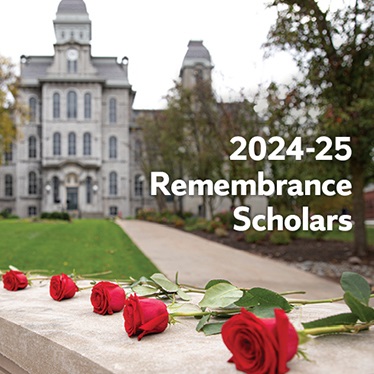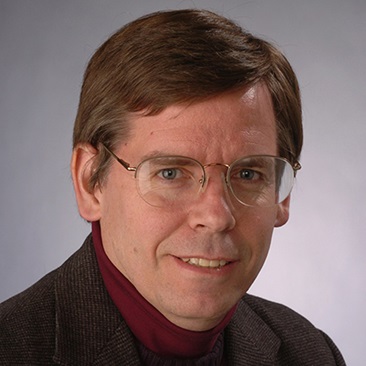The Truths Behind the Myth of Harriet Tubman
June 23, 2008
Harriet Tubman is an American heroine, but her life story is shrouded in myth and exaggeration. Thanks to the work of Maxwell faculty members and students, the genuine contributions of Tubman’s life are coming to light.
As if there weren’t enough controversy during the campaign between Democratic presidential hopefuls Hillary Clinton and Barack Obama, an unlikely firestorm erupted in February, when historical icon Harriet Tubman was pulled into the fray.
It all started when feminist political analyst Robin Morgan updated her infamous 1970 essay “Goodbye to All That” to castigate the racist and sexist divisions in the campaign, particularly as hurled against Clinton. In response to the failure of some women to support Clinton (and by implication, failure to be liberated), Morgan wrote: “Let a statement by the magnificent Harriet Tubman stand as reply. When asked how she managed to save hundreds of enslaved African Americans via the Underground Railroad during the Civil War, she replied bitterly, ‘I could have saved thousands—if only I’d been able to convince them they were slaves.’”
Within days, the validity of the quote was called into question by Ralph Luker of the History News Network, who contacted scholars who have researched Tubman—including Milton Sernett, professor emeritus of history at the Maxwell School (and African American studies at SU). Sernett is the author of the recently published Harriet Tubman: Myth, Memory, and History.
None could trace the quote to primary sources.
“My impression is that this is a late 20th-century quote from a fictionalized account of Tubman’s life,” Sernett told Luker. “Whoever wishes to use the dubious quote as a political zinger ought to cite a reliable source.”
Luker then told Morgan, “Cite your source or quit pimpin’ out Harriet Tubman.”

That Tubman’s legacy would be misappropriated for political use was not particularly surprising to Sernett, who writes in the introduction to his book that Tubman may be “America’s most malleable icon.”
While Tubman has become one of the most recognized symbols of the anti–slavery era, the actual facts of her life have become shrouded beneath her status as a revered public icon. Her current prominence is indisputable. According to the March 2008 Journal of American History, she’s the third most identified African American historical figure (after Martin Luther King Jr., and Rosa Parks). Her image graces a U.S. postage stamp. She is the subject of numerous children’s books and educational materials. Congress is currently studying whether her historic home should be turned into a national park.
Nonetheless, misinformation about “the Moses of her people” abounds. Tubman was illiterate and left no written record of her own, but tales of her heroics, both in rescuing other slaves and serving as a nurse, spy, and scout in the Civil War, have been canonized in biographical narrative, not all of it perfectly true.
These embellished semi-truths embedded in what seems to be literal biography are at the root of the problem. “That is where much of the misinformation about her has come from—historical fiction that is not always clear about when it is historical and when it is fictive,” Sernett says.
Sernett, with his recent book, is helping sort things out. He chronicles the life of the commemorated Tubman (the myth) and compares it with the actual Tubman, in the process exploring “the myth that draws on the factual core but is often in tension with it,” he writes.
Sernett is one of two Maxwell faculty members helping to adjust popular understanding of Tubman’s history, the other being anthropologist Douglas Armstrong. For most of this decade, Armstrong has overseen archaeological projects at the homestead in Auburn, New York, where Tubman lived out almost 50 years of her life. His work, much of it conducted as field studies with Syracuse University students, is providing a version of Tubman that is more genuine, more three-dimensional than her iconic bearing.
“So little information about Tubman has been based on fact and so much based on myth and created history,” says Armstrong. “. . . Hopefully, we’re coming to the point where we can recognize her true contributions.”
Let’s start with a brief history lesson, with an eye out for imbedded myth: Harriet Tubman was born Araminta Ross, probably in 1822, the fifth of nine children, in Cambridge, Maryland. The daughter of slaves, “Minty” was nearly killed as a teen by a blow to her head from an iron weight, thrown at another slave by an angry overseer. She was severely injured and suffered from headaches, seizures, and narcolepsy for the rest of her life. (This piece of the myth appears to be true! Tubman is said to have been struck when she deliberately placed herself between the overseer and the other slave. Her resulting impairment—the sleeping spells—made her a less desirable slave.)
In 1844, Tubman married and around the same time shed her childhood nickname for her mother’s name, Harriet. Two years later, her owner died; she and her family were now at risk of being sold and dispersed. It was then that Tubman tapped into the Underground Railroad and escaped to Philadelphia.

It’s said that over the next decade she made approximately 19 trips to the eastern shore of Maryland, bringing 300 slaves to freedom and earning the title of the “Black Moses.” (Well, not quite. Kate Clifford Larson, author of another recent scholarly biography of Tubman, puts the number of trips between 11 and 13. Sernett says the documented number of slaves rescued is closer to 70, although an exact number is impossible to know. Additional slaves made it north on their own using instructions from Tubman, but that number is also impossible to calculate.) Those rescued include her parents, brothers, and other family members, many of whom settled in Canada and Central New York. As word of her success spread, the bounty for her capture rose to as high as $40,000. (False! According to Larson, “There never was a $40,000 reward for Tubman’s capture, a figure that became grossly exaggerated through the retelling of her story.”)
In 1859, William Henry Seward, New York senator and later Lincoln’s secretary of state, sold Tubman a home on the outskirts of Auburn, New York, where she settled her aged parents and other family members before joining northern abolitionists in support of Union efforts in the Civil War.
During the Civil War she headed back south, where she provided nursing care to black soldiers and the hundreds of newly liberated slaves who crowded Union camps. Her service also included spying and scouting behind Confederate lines, and she is said to have become the first woman to command an armed military raid when she guided Col. James Montgomery and his 2nd South Carolina black regiment up the Combahee River, routing out Confederate outposts; destroying stockpiles of cotton, food, and weapons; and liberating more than 700 slaves. (Only partly true! “While she was certainly a nurse, spy, and scout for the Union Army, I think the claims that she was the first female general and commanded a raid are wishful thinking,” says Sernett.)
After the war, Tubman lived for almost 50 years in Auburn, where she raised pigs and vegetables. She remarried (having been abandoned by her first husband) and was active as a suffragist and humanitarian, opening a home for indigent African American elderly, many of them former slaves.
During his 30 years teaching at SU, Milton Sernett has published seven books on African American history, most of them focusing on religion, and conducted extensive research on the abolition movement and Underground Railroad in Central New York. In his writings and his classroom, the subject of Harriet Tubman was no stranger. “You really can’t miss her in any facet of African American history that deals with cultural icons,” he says.
Sernett was long puzzled as to why a figure who had clearly captured the public imagination had been neglected by professional historians. The last attempt at a serious biography about her had been written in 1943 by journalist Earl Conrad. “It seemed strange that a figure who was so large a symbol should suffer such a dearth of historical information,” he says.
As Sernett began research on a possible biography, the evidentiary trail led to early biographies written by Geneva, New York, resident Sarah Bradford, based on interviews with Tubman—works sponsored by Senator Seward and other Tubman supporters in the late 1880s in an attempt to get Tubman’s story out and improve her financial situation.
Sernett quickly found internal inconsistencies. “It gradually dawned on me that much of what we as Americans thought we knew about Harriet Tubman was not derived from good historical research but was a perpetuation of a larger-than-life story,” he says. “The symbol had overpowered the life, had overshadowed the historical person.”
Sernett began teaching a class, Harriet Tubman: Myth, Memory and History. (He believes it to be the first such course on Tubman at any college or university.) In addition to studying Tubman’s life, the class wrestled with the question of why some historical figures are forgotten and others remembered, how American memory plays a role in choosing icons, and the extent to which individuals use icons in their own lives to inspire. The course syllabus became a loose outline for Sernett’s book of the same name, published by Duke University Press last fall.
“The interaction of the myth, memory, and history of Harriet Tubman is not unlike that of any American icon, be it George Washington or Abraham Lincoln,” says Sernett, who retired from full-time teaching in 2005. “One of the purposes of myth is to give status to the myth tellers within their own social environment. Harriet Tubman was very useful as different segments of American society struggled to achieve parity at the table. Whether it’s women or African Americans or the disabled, it’s amazing the variety of different groups who have adopted her as their symbol.” Because Tubman left no writings of her own and only limited information is available in the public record, Sernett says there has been “elbow room for groups to create whatever they wish as a symbol to honor her.”
By comparing the larger-than-life symbolic Tubman with the actual, historical Tubman and analyzing how the Tubman icon has changed over time, Sernett explores in his new book the interplay of history and myth in our national consciousness and illustrates that the various constructions of “Black Moses” reveal as much about their creators as they do about Tubman herself.
Setting the record straight does not diminish Tubman’s accomplishments. “The humanistic values enshrined in her life strike right at the core values of the American system—essentially, if you have enough faith and you struggle hard enough you can triumph over adversity,” says Sernett. “She exemplifies what we would all like to be.”
Until recently, the physical evidence related to Tubman only added to the misinformation. People driving through Auburn, New York, for example, were often excited when they passed the white clapboard house with a sign marking it as the home of Harriet Tubman.
The only problem is, Tubman never lived there. She lived next door, in a house that was originally wood, then rebuilt from bricks made on the property after the wood house burned in 1880.
The white house is one of several dwellings on the 32-acre property Tubman owned, which at one time included 10 structures and was a self-sustaining farm. It is believed that the white clapboard house was part of the Tubman’s Home for the Aged.
Much of this information has come to light—literally—only in the last decade, the result of work led by Maxwell School anthropologist and archaeologist Douglas Armstrong.
Armstrong has worked on issues related to African diaspora, slavery, and freedom for 25 years, though his primary focus was on archaeological investigations in the Caribbean. His work on Harriet Tubman, though, came somewhat by accident. In the early 1990s, as part of a public policy and archaeology class, Armstrong and his undergraduate students carried out an archaeological investigation of the former Wesleyan Methodist Church in Syracuse, which housed a piece of art that may have been made by African American refugees from slavery. Historical and archaeological investigations confirmed the importance of the church in the abolition movement. As part of a follow-up summer archaeological field school, Armstrong and his students visited several sites associated with people involved with the Freedom Train and/or Underground Railroad. One of those was the Harriet Tubman Home in Auburn.
“I was surprised by how little was known of Tubman and the relative condition of the structures associated with her life,” says Armstrong of his first look at the property. “In time, I would come to understand the difficulties and hardships involved with maintaining the property, but my initial impression was, 'How could a site associated with such an important person in American history be so poorly known?'”
Since 1903, Tubman’s property has been owned by the African Methodist Episcopal Zion Church in Auburn. (Tubman deeded it to her church because she couldn’t afford the upkeep and wanted to ensure its continuation as a home for aging African Americans.) Since 1953, when they opened it to the public, members of the church have struggled to maintain the property as a popular tourist site. Though they undertook the task with a great sense of purpose and dedication to keeping Tubman’s memory alive, they did so with limited funding.
During a class visit to the Tubman Home, Armstrong asked about the location of a large brick building called John Brown Hall, evident in photos on display. He was told that the structure no longer exists and that no one knows its original location—only that it was somewhere back in the woods.
It was nearly lunch time. Armstrong told his students to go into the brush past the mown part of the grounds. There would be no lunch until they found the remains of the building.
“Fifteen minutes later, we were eating lunch on John Brown Hall,” he says. “There was this huge rock pile covered with brick. It was fairly obvious, but it was in the woods, lost to memory.”
Four years later, Armstrong set up his first archaeological project at the site. He returned the following summer to give a four-week-long “field school” course, now given every summer to a mix of undergraduate and graduate students—roughly half of them anthropology majors or master’s students, and the others just people interested in archaeology or in Tubman. Part of the six-credit course is textual; students read Tubman biographies, histories, and other references to her life and social network in Auburn. Students also learn the field techniques of archaeology—how to map, excavate, analyze artifacts, and correlate what they find in the context of where they’re working.
The first two summers were spent excavating around John Brown Hall, which had served as a dormitory or infirmary of the Home for the Aged. Subsequently, Armstrong and his team have surveyed the entire property, excavated a brick kiln, and excavated around Tubman’s house and yard. In the process, they have amassed a tremendous collection of material objects that, combined with other information, paint a picture of Tubman’s life in Auburn.
“For example, from tax records, we know how many pigs she had, what kind of orchards. Census records tell us who lived in the house, so we know that the objects we found belong to Tubman and her close relatives,” says Armstrong, a Maxwell Professor of Teaching Excellence and a Laura J. and L. Douglas Meredith Professor (S.U.’s highest teaching honor).
The most exciting find came in 2004, on the second-to-last day of excavation, just outside the door to Tubman’s house.
“All of a sudden, all of these artifacts just started coming out of the ground,” says Anna Hill, a doctoral candidate in anthropology and Armstrong’s research assistant on the Tubman project.
Earlier excavation had determined that Tubman’s original home had burned to the ground in 1880, and a new brick structure built on the original foundation. (Because Tubman’s second husband was a brick mason by trade and a brick kiln was excavated on the property, it is believed that the bricks for this house were made there.) What the team came upon was a builder’s trench that had been dug along one side of the foundation. “They had pulled all the burned material from the house, dumped it in this trench, and covered it up,” Hill says.
It was a huge discovery. “Everyone always thinks of Harriet Tubman as being poverty stricken,” says Hill. “But we uncovered beautiful glass vases, china, curtains. It completely changed how I imagined the inside of her house looking.”
In addition to completing the archaeology on the site, the key players at the Tubman Home want to see the property physically restored in a manner authentic to the Tubman era. To that end, Armstrong is working with Beth Crawford (of Crawford & Stearns Architects and Preservation Planners), who has spearheaded the physical restoration of the house; and consulting with the site’s directors, Reverend Paul Carter and his wife, Christine. (The Carters represent the A.M.E. Zion Church, which is funding the restoration, through Harriet Tubman Home Inc. In addition, SU Chancellor Nancy Cantor has provided University support for both the archaeological project and toward efforts to enhance the Tubman Home’s public interpretation mission.)
The Tubman property consists of two tracts, one section that included her home and farm and another with dwellings for her Home for the Aged. Unfortunately, the residential portion was home to a bus company for many years. Cinderblock additions turned the original barn into a bus garage. When hazmat abatement is complete—there is an old fuel tank that must go—the additions will be removed and the barn rebuilt to its earliest form. Using original photos and renderings, the exterior of the house will be restored with porches added to mimic the original, and a woodshed rebuilt on the rear.
“These buildings, rebuilt to their original state, will help tell an accurate story of Tubman’s life,” Crawford says. “We are trying to document the real story of the site so that we can interpret it correctly. There were a lot of misconceptions before Doug came to the project in the way the site was interpreted. So much of Doug’s work has explained what the site tells us about Tubman’s life.”
In 1998, Sernett and Armstrong were both present when then-First Lady Hillary Rodham Clinton visited the Tubman site as part of her Save America’s Treasures tour and announced a $10,000 grant toward the restoration of the home. Now, Armstrong and the A.M.E. Zion Church hope to have the Tubman Home reborn as a national park. Armstrong is using his public policy expertise to help represent the church in its negotiations with the National Park Service. Having worked for eight years in association with the Virgin Islands National Park in St. John, he understands both organizations well—the National Park Service and the A.M.E. Zion Church. “I’m in a wonderful position where I can translate the hopes of each organization to the other,” Armstrong says.
If all goes well, there will be National Park status and a full-scale information and interpretation center at the Tubman site in time for the centennial of her death in 2013.
“Harriet Tubman has an incredible, unique history,” says Armstrong. “Here she was, a former slave, but she was also a property owner. She was a farmer. She was involved in the brick-making industry. So here you have a black-constructed house, from bricks that were probably made by blacks, on a site owned by blacks in the late 1800s.”
In addition to Sernett’s book, there have been three scholarly biographies of Tubman published since 2003. While today’s historians are attempting to set the Tubman record straight, perhaps her property is the best means for Tubman to tell her own story. “The life she led is one that is and should be inspirational,” says Armstrong. “We have things Tubman owned on a landscape she constructed. If we can present those material things in a setting that projects that inspiration to future generations, I think we’re making a huge contribution.”
By Renee Gearhart Levy
Related News
Research

Apr 18, 2024
School News

Apr 18, 2024
School News

Apr 18, 2024
School News

Apr 17, 2024
